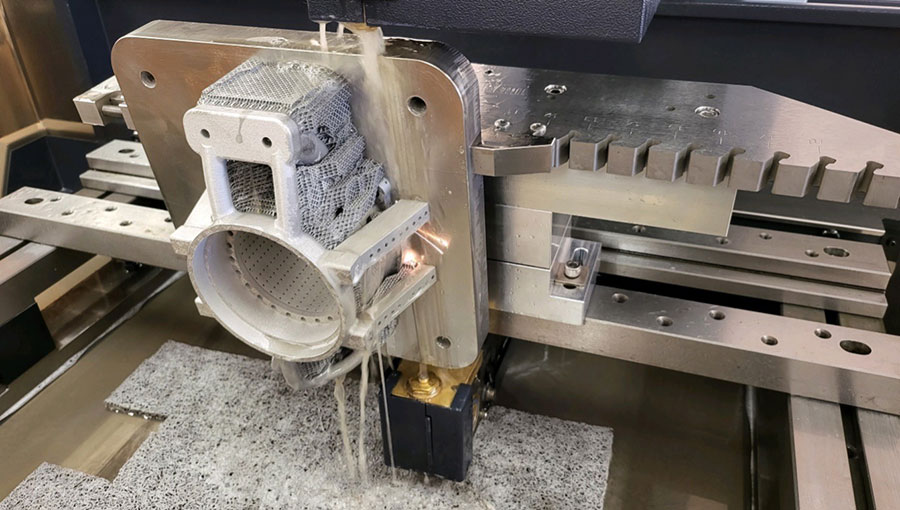Technology in the field of biometrics has improved rapidly. Biometric technology has taken a big step forward with 3D face recognition. Unlike older 2D systems, this new technology uses the depth and actual shape of your face to verify your identity, allowing you to more accurately determine your identity.
How does it work? Well, it uses advanced hardware like a depth sensor to sense not only surfaces but also the curves and depth of your face. This means it won’t be easily fooled by things like different lighting or weird faces.
Another great advantage is the ability to detect fake faces. While 2D systems can use photos to spoof, 3D technology can detect whether a face is flat or real, preventing fraud. Additionally, just like the old system, it is contactless, ie. you don’t need to touch anything and it’s more hygienic than a fingerprint scanner.
Challenges
While 3D face recognition has its advantages, it also presents some obstacles, particularly in terms of what is needed for it to work properly.
Hardware:
To get good 3D facial recognition, you need special sensors or cameras, which can be difficult and expensive to set up, especially for large projects. Making this technology cheaper and easier to use will require significant investment, new technology ideas, and consistent standards.
Data collection:
To create an intelligent 3D face recognition online, you need many different types of high-quality data. However, most facial images are just regular 2D images, lacking additional depth information. Therefore, it is difficult to collect a variety of real-world data, and manually labeling all the data can take a long time and contain errors.
Aging
Aging is a major challenge for AI face recognition as the texture and properties of the face change with age. When people grow older, their wrinkles deepen, their skin surface changes and other features of the face evolve. Such changes introduced over time in an individual’s facial characteristics make it difficult for a 3D face recognition system to continuously keep track of identifying individuals accurately. Regardless of their age, thus the challenge is about adapting to these changes. But still, be able to recognize faces correctly. Certain techniques like AAM help reduce the dimensionality of facial images, providing consistency to important features even throughout the aging process. In an effort towards improving the accuracy of face recognition— taking into consideration aging effects at both training and testing phases— methods like CAN network plus non-linear analysis is an effective way to tackle the problem.
Thermal Image
Thermal images show heat rather than normal light, which poses challenges for accurately identifying faces because they have lower resolution and are affected by lighting, requiring special techniques to extract features from them. Combining features from different image types (e.g. normal and thermal images) is complex but necessary for better recognition. Moreover, one also needs methods that work well under a variety of real-world conditions where lighting may vary. It is important to evaluate the effectiveness of these methods to improve them over time. In general, face recognition AI from thermal images requires experts to solve problems such as image quality, feature extraction, and adaptation to different environments.
Iris
The iris is the colored part of the eye and is an important aspect of facial recognition of people. There are ways to extract features from the iris for biometric analysis, meaning unique physical characteristics can be used for identification. These methods are often based on technologies such as biohashing. The researchers are testing the effectiveness and reliability of these methods by comparing them to various databases of iris images. This helps the detection system work properly and provide accurate results. Sometimes there may be issues like data loss during processing, but techniques like fusion can help resolve these issues. However, the effectiveness of these methods is tested using experimental frameworks such as CASIA-IRIS.
Facial expression
The reason facial recognition becomes difficult is because facial expressions change. However, researchers have developed ways to address this challenge. For instance, they have introduced a system that can detect faces irrespective of the expression with high accuracy. On the other hand, some teams have proposed a different technique that does not take into account the expression but only focuses on specific facial points. They used special algorithms to match faces in 3D space. There are also methods of analyzing various expressions like joy or sadness. All these undertakings demonstrate that identifying individuals through their faces while they change has been depicted as one of the major stumbling blocks for facial recognition technology. vyvymangaa
Conclusion
When it comes to recognizing a person, face is the fundamental feature. There are various techniques for facial recognition but each presents its challenges. In this article, we discussed some of the difficulties of 3d facial recognition. Research is being done to improve the work processes to tackle challenges.



